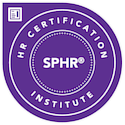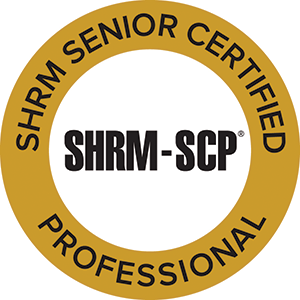 In my last blog, I discussed the importance of taking some time – now – to plan for the various HR activities that need to occur throughout the year. A good place to start is with your workforce planning. We all want to grow our businesses. But without a clear understanding of the knowledge and skills that will be required to move the business to the next level, this is a difficult goal to achieve.
In my last blog, I discussed the importance of taking some time – now – to plan for the various HR activities that need to occur throughout the year. A good place to start is with your workforce planning. We all want to grow our businesses. But without a clear understanding of the knowledge and skills that will be required to move the business to the next level, this is a difficult goal to achieve.
Workforce planning helps consider the size, type and quality of the workforce you will need to achieve your company objectives. It helps you strategically recruit, hire and develop employees to ensure that you have the right people in the right place at the right time.
Workforce planning can include operational considerations such as work schedules and hours, distributing talent among divisions and departments, identifying functions no longer needed and reassigning workers, and maintaining employee engagement. The more strategic side of workforce planning looks at identifying skills sets needed as the company grows and changes, transferring company knowledge as employees leave, and defining recruitment strategy for future workforce needs.
An effective workforce plan keeps talent in the pipeline for when you have an immediate need. It improves your bench strength by helping you identify and prepare future leaders. And it ensures that you are ready for future opportunities.
Start by defining job roles: the work that needs to be done, and the skills and competencies required for that work. If you’re starting from scratch, you may want to use an employee who is currently doing the work successfully as a model to identify required skills, experience and behaviors, but remember that a job should be designed around the role requirements, not a particular person.
Once you’ve defined and designed the critical job roles to meet your needs today, spend some time thinking about skills/job roles you may need in the future. This will be helpful in identifying skill gaps, and determining whether it makes more sense to hire for those skills gaps or to develop current employees to fill the gaps.
Next, create formal job descriptions. Job descriptions should be reviewed and updated at least annually, and whenever someone leaves. Job descriptions should be as detailed as possible. This will help you recruit the right person for the job. It will also give you a legally defensible document, or ‘benchmark’ for performance management. Be sure your job descriptions include at least the following:
- Job title
- Job location
- A summary of the job objective/purpose
- Scope of responsibility
- Reporting relationships
- Qualifications required (experience, skills, competencies)
- Key functions and duties (including standards)
- Physical requirements of the job
Please contact me if you need help creating your workforce strategy.


 Surveys show that one of the key factors in keeping employees engaged and motivated is the opportunity to learn and grow. For small companies, however, who often have limited (or non-existent) training budgets, providing those opportunities can be a challenge. Yet there are a variety of ways you can develop your employees without a lot of expense. Here are five of them.
Surveys show that one of the key factors in keeping employees engaged and motivated is the opportunity to learn and grow. For small companies, however, who often have limited (or non-existent) training budgets, providing those opportunities can be a challenge. Yet there are a variety of ways you can develop your employees without a lot of expense. Here are five of them. In my last blog I talked about the change in the minimum salary requirement for exempt employees that goes into effect in December. Here are some other HR-related legal updates that may also affect you.
In my last blog I talked about the change in the minimum salary requirement for exempt employees that goes into effect in December. Here are some other HR-related legal updates that may also affect you. The Department of Labor has announced new federal regulations increasing the minimum salary that must be paid to qualify an employee as exempt from overtime. As of December 1, 2016, an exempt employee must be paid a minimum of $913 per week, or $47,476 annually.
The Department of Labor has announced new federal regulations increasing the minimum salary that must be paid to qualify an employee as exempt from overtime. As of December 1, 2016, an exempt employee must be paid a minimum of $913 per week, or $47,476 annually.


